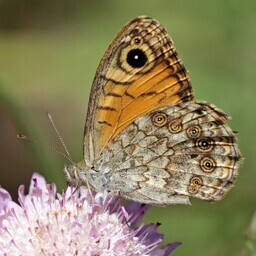Subjektiivne tunne ütleb, et liblikaid on vähevõitu. Sama juttu on rääkinud mulle ka teised
liblikahuvilised
. Kevade teisest poolest alates on midagi nagu paigast ära. Me ei räägi sellest, et ühte või mõnda liiki oleks vähem, vaid kõiki liblikaid on vähem.
liblikahuvilised
Tõlge fraasile: liblikahuvilised
EN
butterfly enthusiasts
Peasüüdlaseks peavad teadlased tänavust jahedat ja vihmast kevadet. Viimane talv oli pigem soojapoolne, lumine talveosa jäi lühikeseks. Seetõttu ilmusid esimesed kevadised liigid paar nädalat varem. Jahe mai ja juuni tähendasid aga, et liblikate areng on mõne aasta keskmisest maas.
Liblikate arvukuse vähenemine mõjutab ka loodust. Liblikad on
tolmeldajad
. Lisaks on nende
röövikud
oluliseks toiduks paljudele teistele loomadele. Kui
toiduallikas
ära kaob, siis võib ka nendel loomadel halvasti minna.
tolmeldajad
Tõlge fraasile: tolmeldajad
EN
pollinators
röövikud
Tõlge fraasile: röövikud
EN
caterpillars
toiduallikas
Tõlge fraasile: toiduallikas
EN
food source
Kuigi liblikatel läheb kehvasti, näib
jahe kevad
sobivat teistele
putukarühmad
ele. Näiteks lutikaid, kahetiivalisi ja kiletiivalisi paistab endiselt olevat palju.
jahe kevad
Tõlge fraasile: jahe kevad
EN
cool spring
putukarühmad
Tõlge fraasile: putukarühmad
EN
insect groups
Tuleviku suhtes on lootust. Liblikate
paljunemispotentsiaal
on väga suur. Keskmisel emasliblikal on
sadakond muna
. Kui tulevad
soodsamad tingimused
, siis
populatsioon suureneb
kiiresti.
paljunemispotentsiaal
Tõlge fraasile: paljunemispotentsiaal
EN
reproductive potential
sadakond muna
Tõlge fraasile: sadakond muna
EN
hundreds of eggs
soodsamad tingimused
Tõlge fraasile: soodsamad tingimused
EN
favorable conditions
populatsioon suureneb
Tõlge fraasile: populatsioon suureneb
EN
population increases
A subjective feeling suggests that butterflies are scarce. Other butterfly enthusiasts have told me the same story. Since the second half of spring, something seems off. We're not talking about one or a few species being fewer, but all butterflies are fewer.
Scientists blame this year's cold and rainy spring. The last winter was rather warm, with the snowy part being short. Therefore, the first spring species appeared a couple of weeks earlier. However, the cold May and June meant that butterfly development is below the average of recent years.
The decline in butterfly numbers also affects nature. Butterflies are pollinators. In addition, their caterpillars are an important food source for many other animals. If this food source disappears, these animals may also suffer.
Although butterflies are doing poorly, the cold spring seems to suit other insect groups. For example, there still appear to be many bugs, dipterans, and hymenopterans.
There is hope for the future. Butterflies have a high reproductive potential. An average female butterfly lays hundreds of eggs. When favorable conditions return, the population can recover quickly.

